Orange hawkweed identification and control
Information about the noxious weed orange hawkweed. Orange hawkweed is also known by its Latin name, Hieracium aurantiacum.
About this weed
Orange hawkweed is a regulated Class B noxious weed. This means control is required in King County under the state noxious weed law.
Orange hawkweed is known as Hieracium aurantiacum, it is in the aster (daisy) family. Other common names include devil’s paintbrush, red daisy, flameweed, devil’s weed, grim-the-collier, and fox-and-cubs.
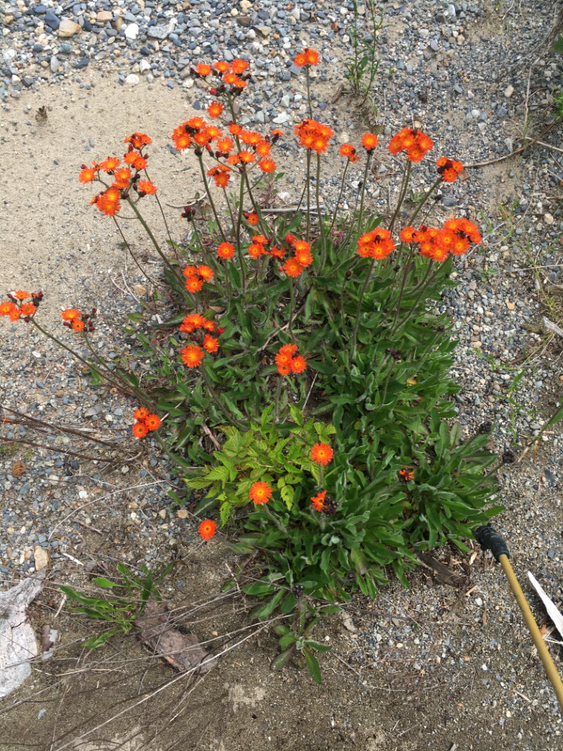
Why it's a problem
Orange hawkweed is an aggressive, unpalatable (not eaten by animals) competitor of plants in pastures and rangeland. It also outcompetes native wildflowers. It crowds out forage and native species by forming dense, monotypic stands. While it is not toxic, it is a serious pest of pasture, mountain meadows, and lawns.
In the past, it was sold as an ornamental plant in nurseries. It is sometimes collected from the wild and replanted by people who mistake it for a native wildflower.
Plant description
Orange hawkweed is a perennial (plant that has a life cycle of 2 or more years) with low-growing, hairy leaves that spreads by stolons (above ground horizontal creeping stems) and creeping roots to form dense mats of leaves. Its flowers are dandelion-like but bright orange.
Its showy flowerheads distinguish it from other hawkweed species. Flowerheads open in May or June and are deep red on the margins with an orange center. They are “ray” shaped with notches at the tips of each ray/petal. Flowers grow in tight clusters at the top of mostly leafless, unbranched stems.
Flower buds are ball-shaped and covered with black and white hairs. Flowerheads, stems, and leaves are also very hairy, especially the new shoots as they emerge in the center of the rosettes.
Stems are usually at least 12 inches tall and exude a milky sap when injured. Stems are light green and covered in fine, relatively long, hairs coming from black glands.
Leaves are mostly basal (grow at the bottom of the stem closer to the ground) except for one or two stem leaves. Basal leaves are generally 3 to 5 times longer than they are wide. The leaves are rounded, getting narrower at the base. Leaves are covered with fine hairs. Leaves are not lobed on the edges.
Seeds are dandelion-like. White fluffy bristles attached to seeds are easily carried with wind.
Orange hawkweed reproduces by seeds and horizontal root systems, and stolons (horizontal plant runners). They create dense mats of vegetation.

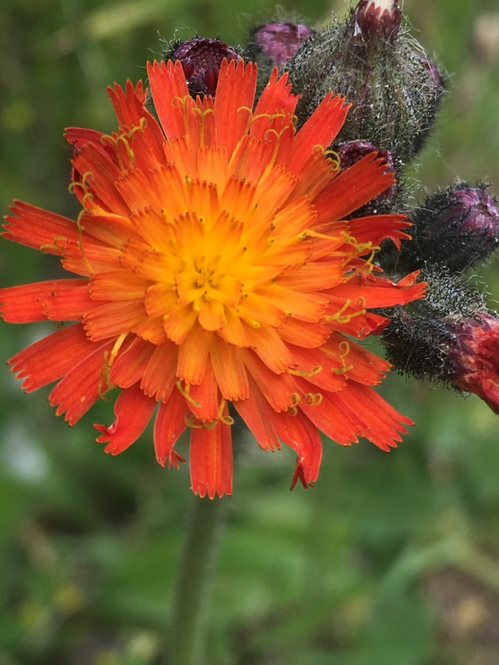
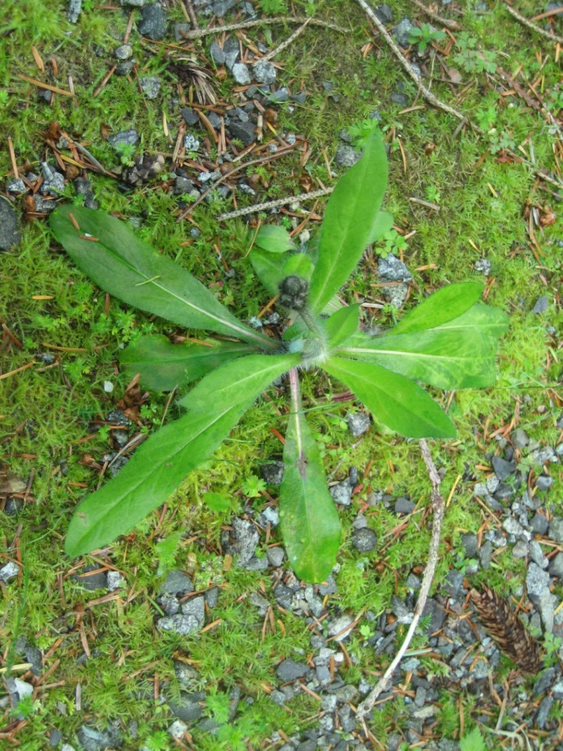
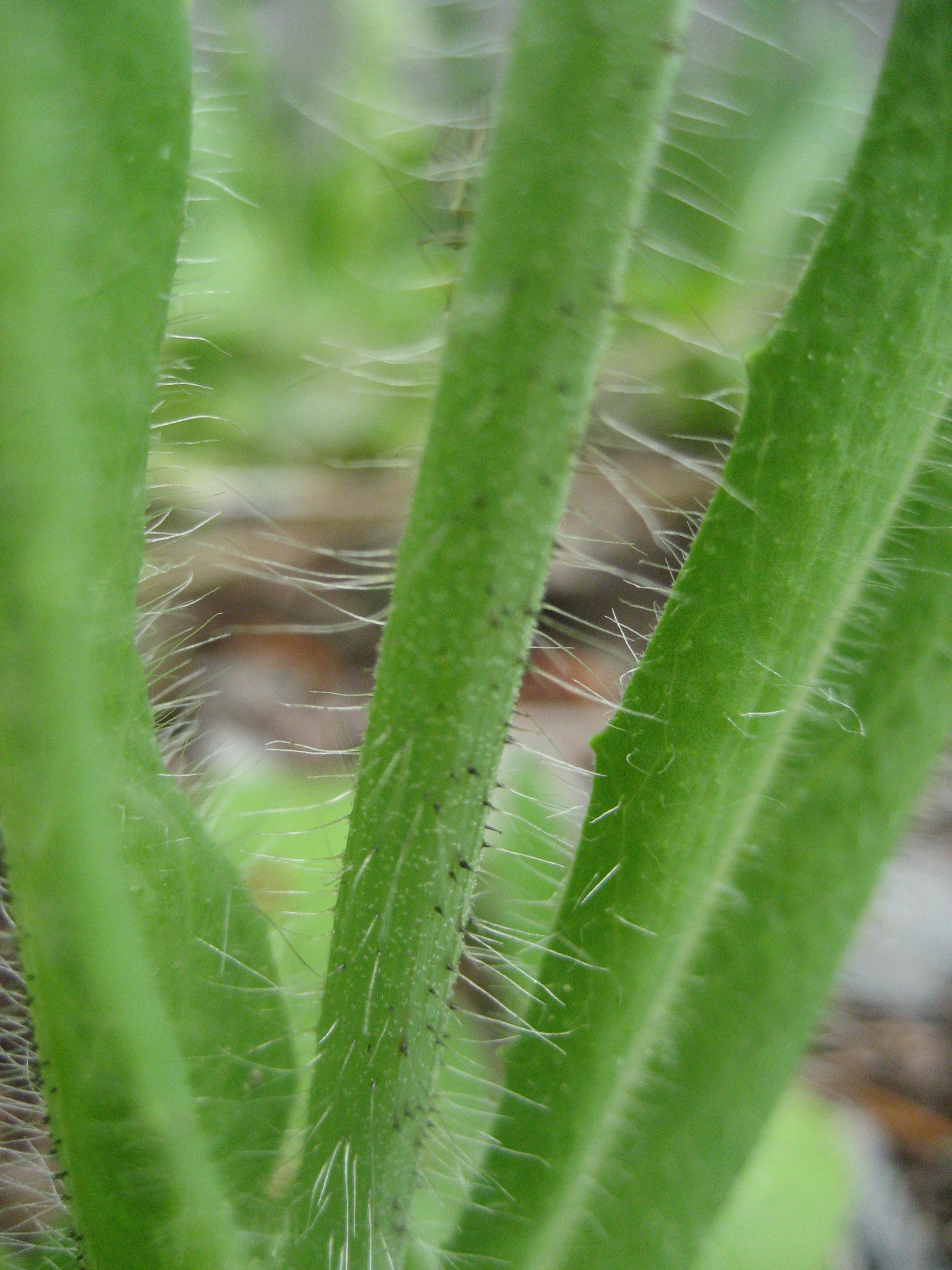
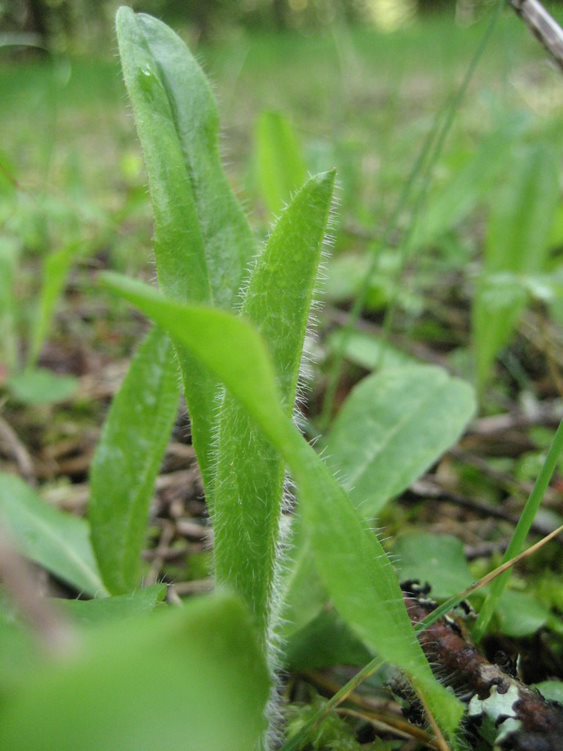
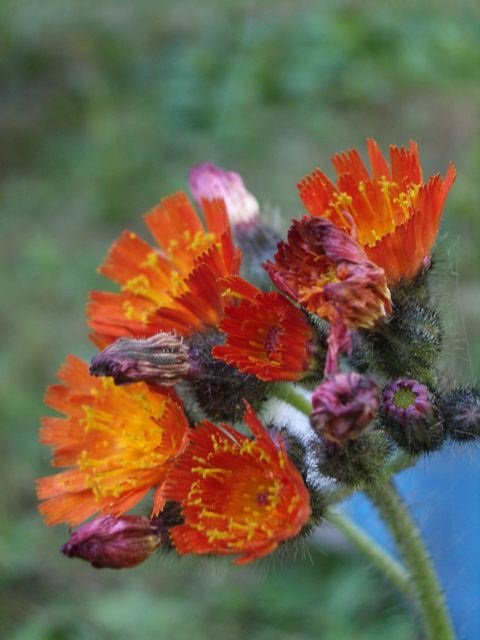
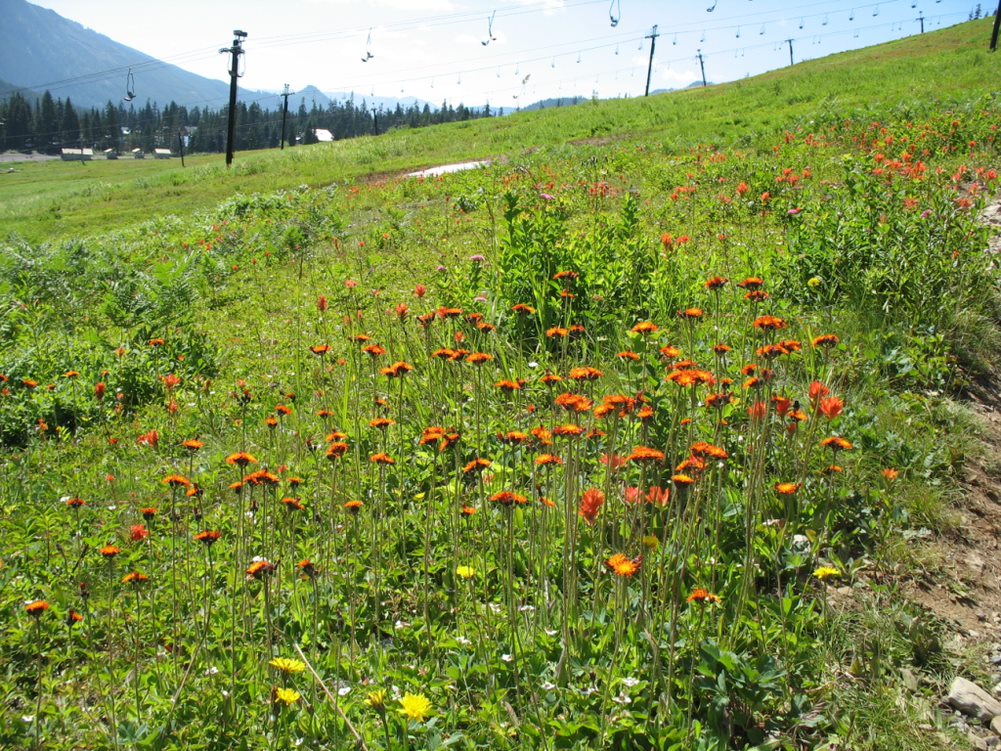
Be aware of look-alike plants
There are many species of similar looking native and invasive meadow hawkweed subgenus species in Washington state. Orange hawkweed is unique in that it has a red orange flower.
Orange hawkweed can also be confused with the native mountain wildflower orange mountain dandelion (Agoseris aurantiaca). Agoseris can be recognized by the long narrow leaf shape, the lack of black hairs on the flowerheads, and the single flower on top of each stem, instead of a cluster of flowers.
Before flowering, orange hawkweed can be confused with another native plant, white flowered hawkweed. The basal leaves of white hawkweed lack stolons (horizontal stems that can re-root when in contact with the ground), and leaf margins (edges) can sometimes be toothed or irregular. If a flowering stem is present, white hawkweed generally has several leaves ascending up the stem, whereas orange hawkweed may have very few (if any) leaves along the stem.
When in doubt, take photos and share them with us or report them on iNaturalist.
What to do if you find it
Property owners are required to control orange hawkweed on their property. Please notify us if you see orange hawkweed growing in King County. Our program staff can provide you with site-specific advice on how best to remove it.
We map all known locations of regulated noxious weeds to help locate new infestations in time to control them.
Control methods
We recommend using a combination of methods to control noxious weeds. In areas with few weeds, it is important to act quickly before they become harder to control. Make a long-term plan as it often takes several years to get rid of most weeds. Start in the least infested areas first and then move into more heavily infested areas.
For more in-depth control information, read Best Management Practices (BMP) for Hawkweeds (305KB)
Manual control
Smaller patches can be dug up if you remove all the roots. Be sure to monitor the site for at least several years because the plant will re-sprout from any fragments left in the soil. Stolons (horizontal stems) and roots connect plants both above and below ground.
Mechanical control
Mowing is not effective because plants will grow back. Mowing can also spread hawkweed to new areas if it is in seed.
Cultural control
Orange hawkweed prefers full sun, so you can plant non-invasive plants that will shade them out. Also, you can improve soil nutrients by adding fertilizers. Orange hawkweed is less competitive against grasses and other forage plants in fertile soil.
Chemical control
Stay safe when using herbicide:
- Always read the label before use.
- Wear a long-sleeved shirt, long pants, shoes, and eye protection.
- Follow state and local regulations.
Non-selective herbicide (such as glyphosate) is effective, but risks killing surrounding grasses. Be prepared to re-seed area with desirable vegetation. A selective herbicide that does not kill grass (such as triclopyr and aminopyralid) may be used in grassy areas and is best applied in the spring and early summer.
Disposal instructions
Bag and dispose of all plant parts in the garbage, as this plant can reproduce from nearly all parts.
Noxious Weed Disposal - Washington State Noxious Weed Control Board

 Translate
Translate